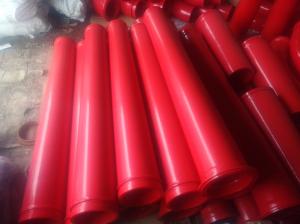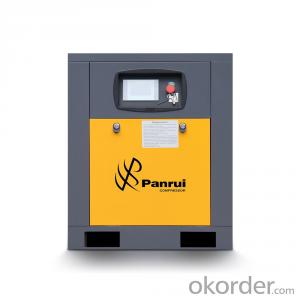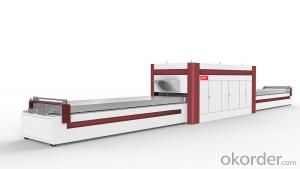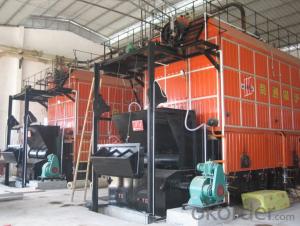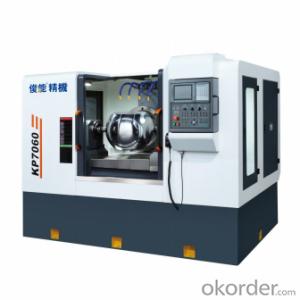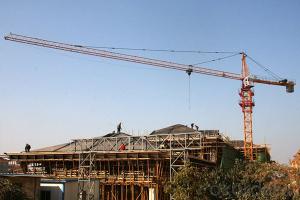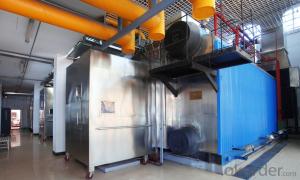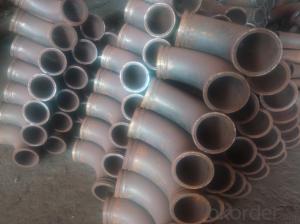Concrete Pump Bend R500, R1000 DN125 with High Quality
- Loading Port:
- Tianjin
- Payment Terms:
- TT or LC
- Min Order Qty:
- 5 pc
- Supply Capability:
- 5000 pc/month
OKorder Service Pledge
OKorder Financial Service
You Might Also Like
Product Description:
Product Name: Concrete Pump Bend DN125
1. Specification of Concrete Pump Bend DN125
Dimensions: 5"
Radius: 500mm,1000mm
Flange: SK, ZX, F&M
Degree: 30°, 45°, 90°
Material: #20 steel, ST52
Thickness: 4.5mm,6mm,7.1mm,7.5mm,10mm,
Working pressure: 180MPa
Notes: total series of concrete pump clamp for different brand concrete pump(PUTZMEISTER, SCHWING, CIFA, SANY, ZOOMLION, IHI, KYOKUTO Etc) available from us.
2. Application of Concrete Pump Bend DN125
Concrete Pump Bend DN125 widely used on concrete pump truck, concrete placing boom, trailer concrete pump etc, for concrete delivery pipe connection.
Our concrete pump bends have been successfully exported to many countries from 1998, Our main markets as below: Middle East, Southeast Asia, America, Brazil, Italy, Russia, South Africa etc
Aiming at the largest concrete pump parts manufacturer, and reliable, professional supplier in China, we can supply concrete pump elbows, delivery pipes, casting or forging couplings, end rubber hoses, rubber pistons, tungsten wear plates, delivery cylinders, and other hydraulic parts, one stop service for your concrete pump parts and accessory business.
3. Package and Delivery of Concrete Pump Bends
Every 60pcs Concrete Pump Bend DN125 put in one seaworthy wooden box, and 20 boxes in one 20feet container.
FAQ:
Q1: Why buy Materials & Equipment from OKorder.com?
A1: All products have its ISO certifications, adheres to the highest standards and a commitment to supply chain safety and customer satisfaction.
Q2: How do we guarantee the quality of our products?
A2: We have established an advanced quality management system which conducts strict quality tests at every step, from raw materials to the final product. At the same time, we provide extensive follow-up service assurances as required.
Q3: How soon can we receive the product after purchase?
A3: Within three days of placing an order, we will begin production. The specific shipping date is dependent upon international and government factors, but is typically 10 to 30 workdays.
Q4: If we can produce some Concrete Pump Bend DN125 according to customers request?
A4: Yes, we can produce Concrete Pump Bend DN125 according to the difference country situations and different concrete pump to make it suitable to the market and customers. We have very professional technical team to make the design.
Q5: How to make a quick resolution for after service?
A5:We have overseas branches all-around of world, IF needed, the seller shall dispatch 2 engineers to the buyer's site for supervision of training. The buyer shall make available of necessary facilities &skilled personnel at site for training.
Images:
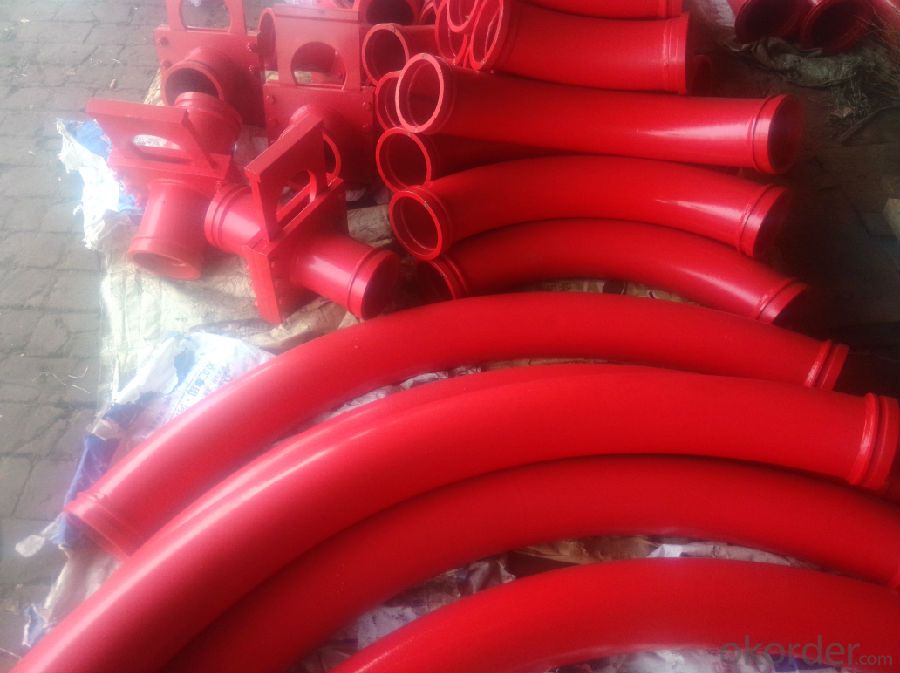
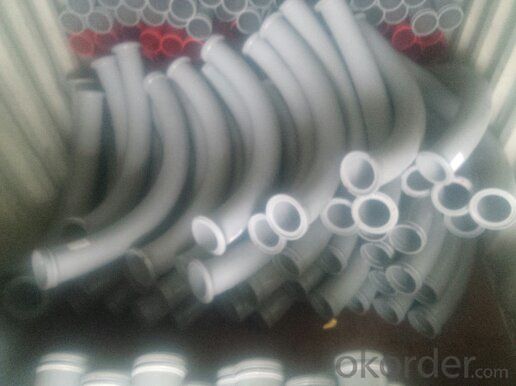


- Q:Can I get spare parts for both concrete pumps with and without water tanks?
- Indeed, spare parts are readily accessible for both concrete pumps equipped with water tanks and those without. A multitude of manufacturers and suppliers present an extensive array of spare parts for concrete pumps, encompassing diverse models with or without water tanks. These spare parts serve the purpose of regular maintenance, repairs, or replacements for a variety of components, including hoses, pipes, valves, cylinders, seals, and other essential elements. Prioritizing the acquisition of appropriate spare parts tailored to your specific concrete pump model is crucial to guarantee compatibility and achieve optimal performance.
- Q:Can I get spare parts for both concrete pumps with and without boom stabilizers?
- Yes, you can get spare parts for both concrete pumps with and without boom stabilizers.
- Q:How often should a concrete pump wear plate be replaced?
- The frequency at which a concrete pump wear plate should be replaced depends on several factors, including the type of concrete being pumped, the volume of concrete being pumped, and the quality and maintenance of the pump itself. However, as a general guideline, it is recommended to inspect the wear plate regularly, especially after each concrete pour, to assess its condition. Typically, a concrete pump wear plate should be replaced when it becomes significantly worn or damaged. Signs of wear may include excessive grooves, cracks, or holes on the surface of the plate. This can affect the efficiency and performance of the pump, leading to decreased output and potential leaks. In high-intensity pumping operations or when abrasive materials are used, the wear plate may wear out faster and need to be replaced more frequently. On the other hand, if the pump is used less frequently or with less abrasive materials, the wear plate may last longer. It is important to note that regular maintenance and proper cleaning of the wear plate can extend its lifespan. This includes removing any hardened concrete residue and ensuring a smooth and clean surface. Lubricating the plate with suitable products can also help reduce friction and wear. Ultimately, it is recommended to consult the manufacturer's guidelines and seek advice from experienced professionals to determine the optimal replacement schedule for a concrete pump wear plate, considering the specific conditions and usage of the pump.
- Q:What are the indications of an inaccurate concrete pump pressure gauge?
- There are several indications that can suggest an inaccurate concrete pump pressure gauge. Here are a few: 1. Inconsistent readings: If the pressure gauge consistently gives varying readings even when the concrete pumping conditions remain constant, it could be a sign of an inaccurate gauge. For example, if the gauge displays a pressure of 1000 psi one moment and then jumps to 1500 psi without any significant changes in the pumping operation, it could indicate an issue with the gauge. 2. Unusual or abnormal readings: If the pressure gauge consistently displays extremely high or low pressure readings that are significantly different from the expected values, it could signify an inaccurate gauge. It is important to be aware of the typical pressure range for the specific concrete pumping operation to identify abnormal readings. 3. Incongruity with other gauges: If there are multiple pressure gauges installed in the concrete pumping system, and they provide significantly different readings, it could suggest that one or more of the gauges are inaccurate. Comparing the readings of various gauges can help determine if a particular gauge is faulty. 4. Inadequate pump performance: If the concrete pump is not performing as expected, such as experiencing reduced output or inconsistent flow rates, it could be due to inaccurate pressure readings. Inaccurate pressure measurements can affect the control of the pump's hydraulic system, leading to inefficiencies in pumping operations. 5. Physical damage or wear: Any visible damage or signs of wear on the pressure gauge, such as cracked glass, bent needles, or loose connections, can compromise its accuracy. Such physical damage can lead to inaccurate readings and should be addressed promptly. It is important to regularly calibrate and maintain the pressure gauge to ensure accurate readings. If any indications of an inaccurate gauge are observed, it is recommended to consult a professional technician or engineer to assess the situation and take appropriate actions to rectify the issue.
- Q:What are the common causes of overheating in concrete pump spare parts?
- Concrete pump spare parts can overheat due to various common causes. One primary reason is improper lubrication, which results in increased friction and overheating of the pump's moving parts like bearings and pistons. To prevent this, it is essential to regularly inspect and maintain the lubrication system to ensure smooth operation. Excessive use or continuous operation without breaks is another common cause of overheating. Concrete pumps have a designated workload, and surpassing it or neglecting proper rest periods can lead to overheating of the components. To avoid this, it is crucial to adhere to recommended operating guidelines and periodically allow the pump to cool down. Additionally, overheating can occur due to clogged or blocked cooling systems. The cooling system in a concrete pump regulates temperature by circulating coolant around vital parts. If the system gets clogged or the coolant level is insufficient, overheating may occur. Regular inspection, cleaning, and maintaining appropriate coolant levels can prevent this issue. Inadequate ventilation is also a common cause of overheating. Concrete pumps generate substantial heat during operation, and if the surrounding environment lacks proper airflow, the heat cannot dissipate effectively. This can lead to overheating of spare parts. To avoid this, it is important to operate the pump in well-ventilated areas or utilize additional cooling measures like fans or air conditioning. Lastly, a malfunctioning or damaged pump component can cause overheating. When a part such as the motor or hydraulic system does not function correctly, it places additional strain on other components, resulting in overheating. Regular maintenance and inspection of the pump's components can help identify and address any potential issues before they lead to overheating. In conclusion, preventing overheating in concrete pump spare parts requires proper lubrication, adherence to operating guidelines, maintenance of cooling systems, ensuring adequate ventilation, and regular component inspection.
- Q:What is the role of a concrete pump hopper grate spring?
- The role of a concrete pump hopper grate spring is to provide tension and support to the hopper grate in a concrete pump. The grate spring is typically made of durable and flexible material, such as steel or rubber, and is designed to keep the hopper grate securely in place while allowing it to move and flex as needed during the concrete pumping process. The hopper grate spring helps to prevent the hopper grate from becoming dislodged or damaged by the force and vibrations generated by the concrete pump. It ensures that the grate remains properly aligned and in position, allowing for the smooth and efficient flow of concrete into the pump. Additionally, the grate spring helps to reduce the impact and stress on the hopper grate, extending its lifespan and reducing the need for frequent repairs or replacements. It acts as a buffer, absorbing and distributing the forces exerted on the grate, which can be significant due to the weight and pressure of the concrete being pumped. Overall, the concrete pump hopper grate spring plays a crucial role in maintaining the integrity and functionality of the hopper grate, ensuring the safe and efficient operation of the concrete pump.
- Q:Can I get spare parts for concrete pumps with different types of valve systems, such as S-valve or gate valve?
- Yes, it is possible to obtain spare parts for concrete pumps with different types of valve systems, including S-valve or gate valve. These spare parts are typically available through manufacturers, distributors, or specialized suppliers in the construction industry. It is important to identify the specific make and model of your concrete pump to ensure compatibility when purchasing spare parts.
- Q:How long do concrete pump spare parts typically last?
- The lifespan of concrete pump spare parts can vary depending on several factors. Generally, high-quality spare parts can last anywhere between 1,000 to 2,500 working hours. However, this estimate is influenced by factors such as the type and brand of the spare parts, the frequency of use, the quality of maintenance, and the working conditions in which the concrete pump operates. Some concrete pump spare parts may have a shorter lifespan due to the wear and tear they experience during operation. For instance, wear parts like rubber seals, pistons, and wear plates are more susceptible to damage and may need to be replaced more frequently. On the other hand, structural components like pipes, hoses, and hydraulic cylinders tend to have a longer lifespan. Proper maintenance and regular inspections play a crucial role in extending the lifespan of concrete pump spare parts. Adequate lubrication, cleaning, and timely replacement of worn-out parts can significantly enhance their durability. Additionally, the expertise and skill of the operator also influence the lifespan of the spare parts since improper use or mishandling can lead to premature failure. Overall, while the average lifespan of concrete pump spare parts can be estimated, it is important to consider the specific circumstances and conditions in which the concrete pump operates to determine their actual longevity. Regular maintenance, high-quality parts, and proper usage will ultimately contribute to maximizing the lifespan of concrete pump spare parts.
- Q:How do I troubleshoot common problems with concrete pump spare parts?
- To troubleshoot common problems with concrete pump spare parts, you can start by carefully inspecting the spare parts for any signs of damage or wear. Check if there are any loose connections, leaks, or blockages. Additionally, ensure that the spare parts are correctly installed and aligned. It's essential to refer to the manufacturer's manual or guidelines to understand the correct usage and troubleshooting steps specific to your concrete pump spare parts. If the issue persists, it may be necessary to consult a professional or contact the manufacturer for further assistance.
- Q:How can you determine when a concrete pump pipe needs to be replaced?
- There are several factors to consider when determining if a concrete pump pipe needs to be replaced. 1. Visual Inspection: Conduct a thorough visual inspection of the pipe. Look for any cracks, damage, or signs of wear and tear. Pay particular attention to the ends of the pipe where it connects to the pump and nozzle, as these areas are more prone to damage. 2. Performance: Observe the performance of the concrete pump. If you notice a decrease in pumping efficiency, such as reduced output or difficulties in maintaining pressure, it could indicate a problem with the pipe. Additionally, if there is excessive leakage or blockages in the pipe, it may be a sign that replacement is necessary. 3. Age and Usage: Consider the age of the pipe and the amount of usage it has undergone. Concrete pump pipes have a limited lifespan, and with time and extensive use, they can become worn out and lose their structural integrity. If the pipe is old and has been used extensively, it may be time to replace it. 4. Regular Maintenance and Repairs: If the pipe has undergone frequent repairs or maintenance, it could be an indication that it is nearing the end of its lifespan. While regular maintenance can prolong the life of a concrete pump pipe, if it has reached a point where repairs are becoming more frequent and costly, it may be more cost-effective to replace it. 5. Safety Considerations: Safety should be a top priority when determining if a concrete pump pipe needs replacement. If there are any significant structural issues or concerns about the pipe's ability to handle the pressure, it is essential to replace it to avoid any potential accidents or hazardous situations. Ultimately, the decision to replace a concrete pump pipe should be based on a combination of visual inspection, performance evaluation, age, usage, regular maintenance, and safety considerations. It is advisable to consult with a professional or experienced technician who can assess the pipe's condition and provide expert advice on whether replacement is necessary.
1. Manufacturer Overview |
|
|---|---|
| Location | |
| Year Established | |
| Annual Output Value | |
| Main Markets | |
| Company Certifications | |
2. Manufacturer Certificates |
|
|---|---|
| a) Certification Name | |
| Range | |
| Reference | |
| Validity Period | |
3. Manufacturer Capability |
|
|---|---|
| a)Trade Capacity | |
| Nearest Port | |
| Export Percentage | |
| No.of Employees in Trade Department | |
| Language Spoken: | |
| b)Factory Information | |
| Factory Size: | |
| No. of Production Lines | |
| Contract Manufacturing | |
| Product Price Range | |
Send your message to us
Concrete Pump Bend R500, R1000 DN125 with High Quality
- Loading Port:
- Tianjin
- Payment Terms:
- TT or LC
- Min Order Qty:
- 5 pc
- Supply Capability:
- 5000 pc/month
OKorder Service Pledge
OKorder Financial Service
Similar products
New products
Hot products
Related keywords

















